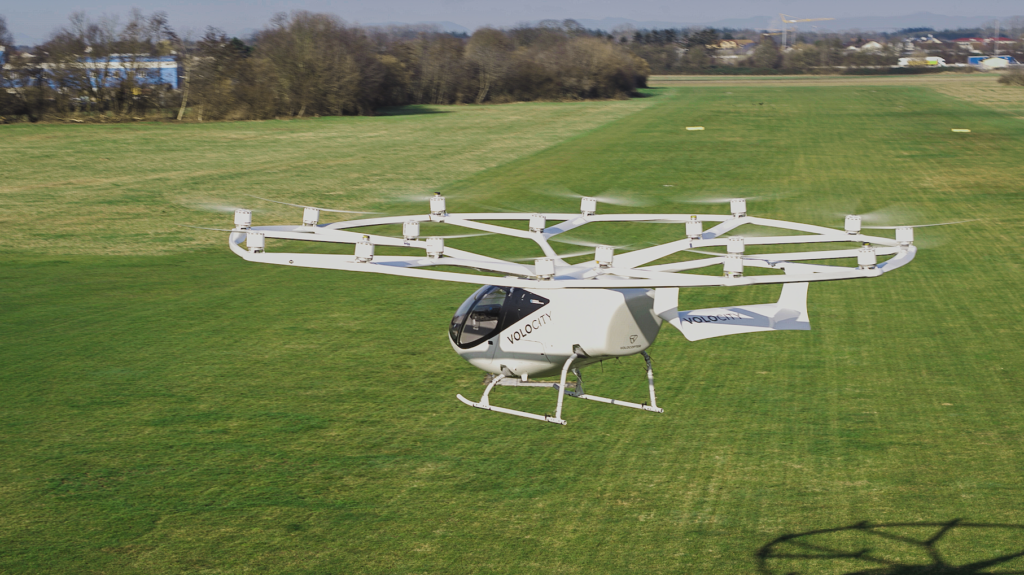
Volocopter opened two new production facilities in Germany, including a final assembly/hangar and an airfield for flight testing. (Photo: Volocopter GmbH)
Volocopter recently announced that it has opened its production facilities in Bruchsal, Germany, including a new hangar and airfield. The company has been expanding its production setup at this location for the last 18 months. Volocopter’s line of electric aircraft includes the VoloCity, VoloRegion, and VoloDrone.
“We have officially opened two new facilities—the production facility and the final assembly/hangar,” a company spokesperson shared with Avionics International in a written statement. These new facilities are in addition to the building that Volocopter acquired in July 2021 along with the acquisition of composite aircraft production company DG Flugzeugbau. Volocopter also announced at that time that it had secured Production Organisation Approval (POA) from EASA.
“We had been working on our prototyping at the DG facility, but now […] we are transitioning into the certification model production phase” and have opened the new production facility and the hangar, the representative from Volocopter explained. The rotor beams, fuselage, and other components will be assembled, machined, and painted at the facility.

“Right here is where the aircraft that will change how humanity moves about cities will take off and make its way across the world. This region is known for transforming mobility—the bicycle, the car, and soon Volocopter, too.” – CEO Dirk Hoke (Photo: Volocopter GmbH)
The output will be taken to the final assembly location/hangar for quality control. A vertiport is attached to the facility where test flights can be conducted. The company’s representative noted that this vertiport “is the first to achieve a special purpose permit to fly in Germany, direct from the facility to do these quality and development test flights.”
Volocopter’s team has started to prepare for mass production at the two facilities, which will be fully ready by the end of the month, according to the spokesperson.
The company’s representative shared that they will not begin mass production of the VoloCity aircraft until it is certified and they have a strong understanding of where the demand is. “Our plan is to start small and ramp up depending on how ready the ecosystem is—vertiport locations, cities committed, routes fixed,” they explained.

“The VoloCity has completed the critical design review—and that’s the aircraft we’re ready to produce, with enough leeway for further learnings derived from flight testing. It’s no easy task to set up a production facility for an entirely new type of aircraft, but my team has done a phenomenal job.” – Andreas Fehring, Chief Supply Chain Officer and Program Manager of the VoloCity (Photo: Volocopter GmbH)
The press release from Volocopter states that the new facilities have both the capacity and the regulatory approval to assemble more than 50 VoloCity aircraft per year. “50+ units/year is a one-shift concept, so when we have an understanding of how many units are required, we can plan to increase the output volume by increasing shifts,” Volocopter’s spokesperson noted.
Last year, Microsoft initiated a collaboration with Volocopter to develop an aerospace cloud system in Microsoft Azure. The two companies plan to continue working closely together, beyond the current focus on developing an aerospace cloud system, to meet other emerging needs of the industry.
Last month, Volocopter and SITA, a leading IT provider for the air transport industry, entered into a new partnership. SITA was chosen as Volocopter’s preferred digital and IT systems partner for vertiports. SITA is also an investor in Volocopter’s Series E funding round.